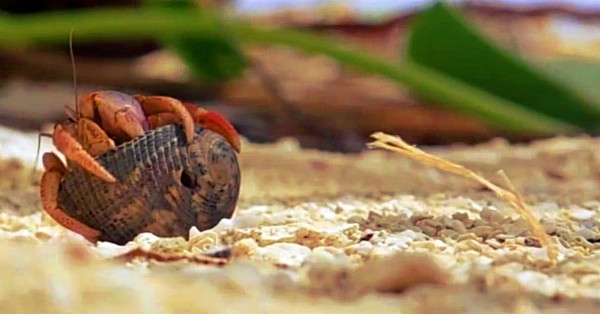
What Happens When a Hermit Crab Outgrows its Shell?
Hermit crabs rely on the shells of other species to protect their sensitive abdomens from the sun, frequently swapping out their old homes for new ones as they age and grow. However, they are very particular about their shells, which led the crustaceans to naturally develop an intricate, synchronized system of shell-swapping.
It works like this: When a hermit crab encounters a possible new home, it will examine the shell and test it out to see if it’s a good fit. If the crab deems the shell worthy, then it will leave its old shell behind and walk away a happy crab. If the shell is too large, however, the crab will wait around until one of its counterparts shows up. If the second crab doesn’t find the vacant shell to be a good fit either, it will wait too, until a large enough crab comes along to claim it.
As the hermit crabs wait for the ideal crab, they line themselves up, smallest to largest, in a behavior that’s called “piggybacking.” When the largest crab takes the vacant shell for his new home, the next largest takes its abandoned home, and so on down the line until every crab has a new shell. Once they settle into their new home, the hermit crabs will redesign the shell’s interior by hollowing it out, and can sometimes even double the shell’s capacity, giving them extra room to grow — that is, before they have to start the entire process over again.
The hermit crabs’ piggybacking and shell-swapping behavior, which was first observed in 1986, is both incredible and rarely recorded.